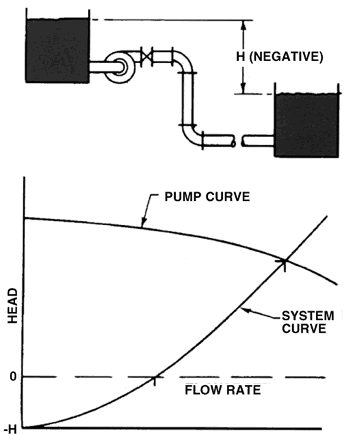[URL unfurl="true"]https://res.cloudinary.com/engineering-com/image/upload/v1434655147/tips/VFD_Pump_curve_xoyddk.pdf[/url]
Goodafternoon,
I am hoping to get a better understanding on pumps and what exactly the manufacturer curves tell me. I don't understand why the attached butane pump curve seems to imply that having a greater static fluid column results in a lower flow rate. Is this exclusively for pumping against gravity? My intuition tells me that this relation would be inverse if we were using this pump to flow liquid downhill rather than uphill, with the greater fluid pressure helping rather than hindering.
Goodafternoon,
I am hoping to get a better understanding on pumps and what exactly the manufacturer curves tell me. I don't understand why the attached butane pump curve seems to imply that having a greater static fluid column results in a lower flow rate. Is this exclusively for pumping against gravity? My intuition tells me that this relation would be inverse if we were using this pump to flow liquid downhill rather than uphill, with the greater fluid pressure helping rather than hindering.

